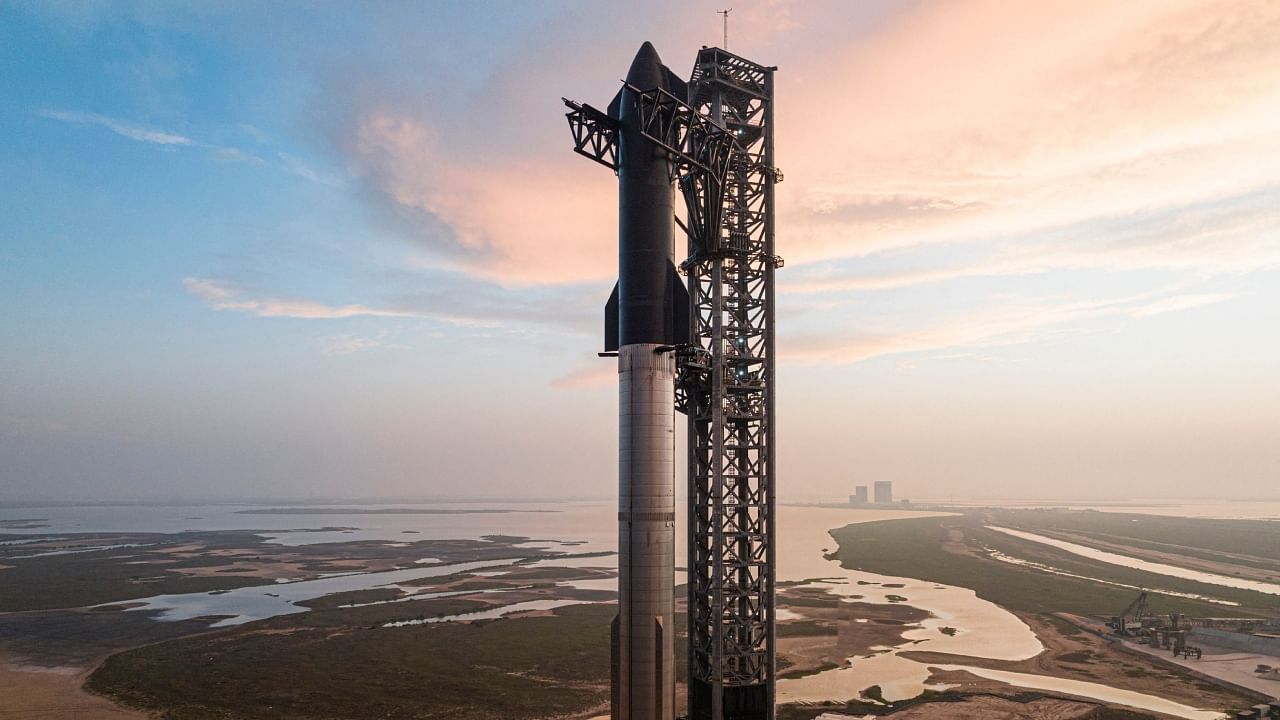
Elon Musk’s silver-hued vision for sending humans to the moon and Mars is standing next to a 480-foot launch tower in the southern corner of Texas. It’s a new SpaceX rocket called Starship that is more powerful than any vehicle that has travelled to space.
As early as Monday morning, SpaceX will try to launch the Starship prototype to space for the first time.
“We’re actually dying to get this rocket off the ground,” Musk said Sunday night during an audio discussion with users of Twitter.
Here’s what you need to know about the flight.
When is the Starship launch, and how can I watch it?
Starship and the Super Heavy booster that will carry it to orbit are scheduled to be loaded with propellants early Monday morning at a SpaceX test site in Texas, just outside Brownsville. The launch site, which SpaceX calls Starbase, is close to the Gulf of Mexico.
SpaceX has scheduled the flight as early as 8 am Eastern time, and it could launch any time between then and 10:30 a.m. The company said it would begin a live stream on its YouTube channel 45 minutes before the rocket is ready to lift off.
If problems arise and SpaceX is not able to launch Monday, it will continue to try throughout the week. While the launch site appeared hazy Sunday afternoon, SpaceX said the weather looked “pretty good for tomorrow morning but we’re keeping an eye on wind shear.”
But Musk set low expectations for Monday’s launch, suggesting it was likely to be called off for technical reasons.
“There’s a good chance that it gets postponed since we’re going to be pretty careful about this launch,” he said. “If it does go wrong, there’s a lot to go wrong.”
What is Starship?
It is the tallest rocket ever built — 394 feet tall, or nearly 90 feet taller than the Statue of Liberty including the pedestal.
And it has the most engines ever in a rocket booster: The Super Heavy, the lower section that will propel the upper Starship vehicle to orbit, has 33 of SpaceX’s powerful Raptor engines sticking out of its bottom. They are able to generate 16 million pounds of thrust at full throttle, far more than the Saturn V that carried the Apollo astronauts to the moon.
Starship is designed to be entirely reusable. The Super Heavy booster is to land much like those for SpaceX’s smaller Falcon 9 rockets, and Starship will be able to return from space belly-flopping through the atmosphere like a skydiver before pivoting to a vertical position for landing.
Why is SpaceX building Starship?
SpaceX’s current Falcon 9 rocket is the most frequently launched rocket in the world. It has launched to space 24 times this year, most recently Friday night.
Starship is the next step. It would be able to carry far more cargo and many more people than Falcon 9. And because it is fully reusable, Starship could greatly reduce the cost of launching payloads to orbit.
NASA is paying SpaceX to build a version of the vehicle to carry astronauts from lunar orbit to the moon’s surface for the Artemis III and IV missions later in the decade. The spacecraft is also central to Musk’s vision of sending people to Mars.
What will happen during the flight?
For Monday’s test flight, Starship will fly part of the way around the Earth, starting from Texas and splashing down in waters off Hawaii.
Eventually, SpaceX hopes to regularly land both the Super Heavy booster and Starship orbital vehicle to reuse them for future launches. But the spacecraft for Monday’s flight will crash in the ocean and sink. It is meant as a first test of the vehicles, and the data will enable engineers to fix what does not work and make improvements.
Musk on Sunday night said a key goal of the flight was to get the rocket a good distance from the launch site without something going wrong.
“Just don’t blow up the launchpad,” he said.
About eight minutes after Monday’s launch, the Super Heavy booster will splash into the Gulf of Mexico. The Starship vehicle will fly higher into space, reaching an altitude of about 150 miles and travelling around the Earth before reentering the atmosphere. If it survives reentry, about 90 minutes after launch, it will splash into the Pacific Ocean some 62 miles north of the island of Kauai.
But with all the new systems in Starship, the SpaceX founder acknowledged the difficulties of achieving all of the flight goals.
“There’s a million ways this rocket could fail,” Musk said. “I could go on for hours.”